Faiza Azam
Mapping Informal Settlements in Developing Countries using Machine Learning and Low Resolution Multi-spectral Data
Jan 03, 2019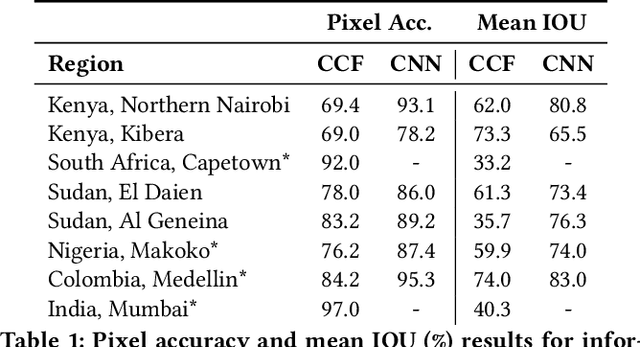
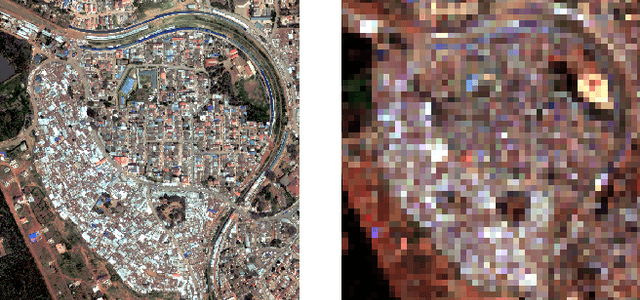
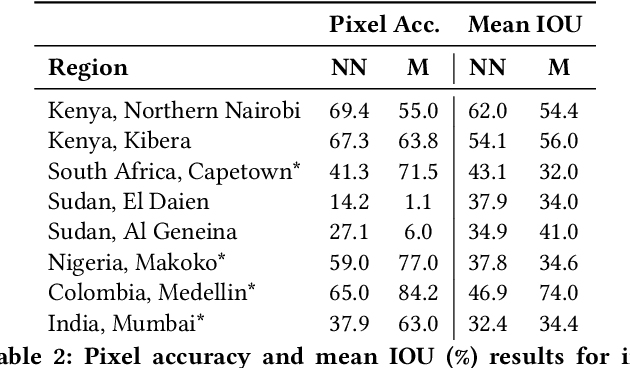
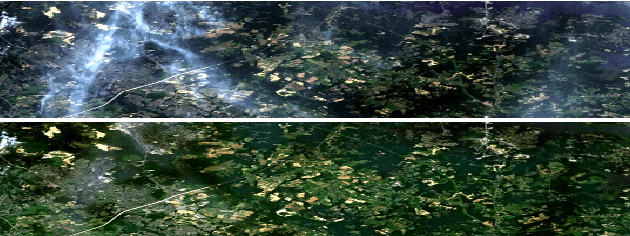
Abstract:Informal settlements are home to the most socially and economically vulnerable people on the planet. In order to deliver effective economic and social aid, non-government organizations (NGOs), such as the United Nations Children's Fund (UNICEF), require detailed maps of the locations of informal settlements. However, data regarding informal and formal settlements is primarily unavailable and if available is often incomplete. This is due, in part, to the cost and complexity of gathering data on a large scale. An additional complication is that the definition of an informal settlement is also very broad, which makes it a non-trivial task to collect data. This also makes it challenging to teach a machine what to look for. Due to these challenges we provide three contributions in this work. 1) A brand new machine learning data-set, purposely developed for informal settlement detection that contains a series of low and very-high resolution imagery, with accompanying ground truth annotations marking the locations of known informal settlements. 2) We demonstrate that it is possible to detect informal settlements using freely available low-resolution (LR) data, in contrast to previous studies that use very-high resolution (VHR) satellite and aerial imagery, which is typically cost-prohibitive for NGOs. 3) We demonstrate two effective classification schemes on our curated data set, one that is cost-efficient for NGOs and another that is cost-prohibitive for NGOs, but has additional utility. We integrate these schemes into a semi-automated pipeline that converts either a LR or VHR satellite image into a binary map that encodes the locations of informal settlements. We evaluate and compare our methods.
Mapping Informal Settlements in Developing Countries with Multi-resolution, Multi-spectral Data
Nov 30, 2018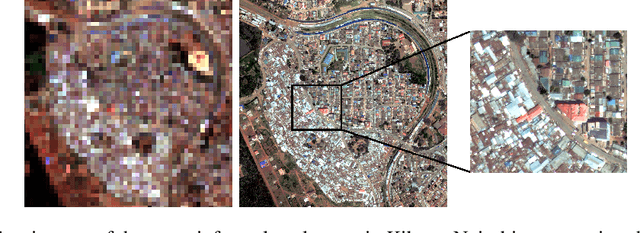


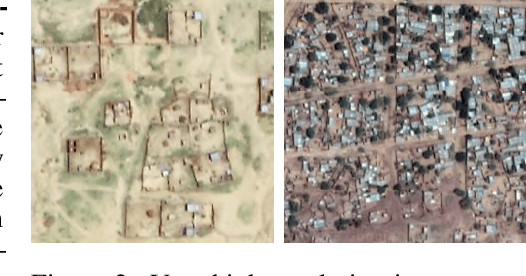
Abstract:Detecting and mapping informal settlements encompasses several of the United Nations sustainable development goals. This is because informal settlements are home to the most socially and economically vulnerable people on the planet. Thus, understanding where these settlements are is of paramount importance to both government and non-government organizations (NGOs), such as the United Nations Children's Fund (UNICEF), who can use this information to deliver effective social and economic aid. We propose two effective methods for detecting and mapping the locations of informal settlements. One uses only low-resolution (LR), freely available, Sentinel-2 multispectral satellite imagery with noisy annotations, whilst the other is a deep learning approach that uses only costly very-high-resolution (VHR) satellite imagery. To our knowledge, we are the first to map informal settlements successfully with low-resolution satellite imagery. We extensively evaluate and compare the proposed methods. Please find additional material at https://frontierdevelopmentlab.github.io/informal-settlements/.
Generating Material Maps to Map Informal Settlements
Nov 30, 2018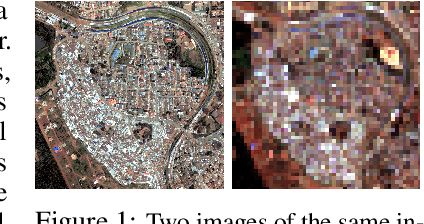
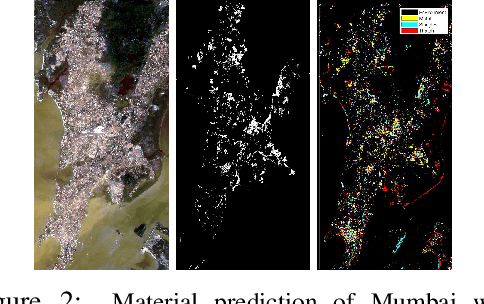
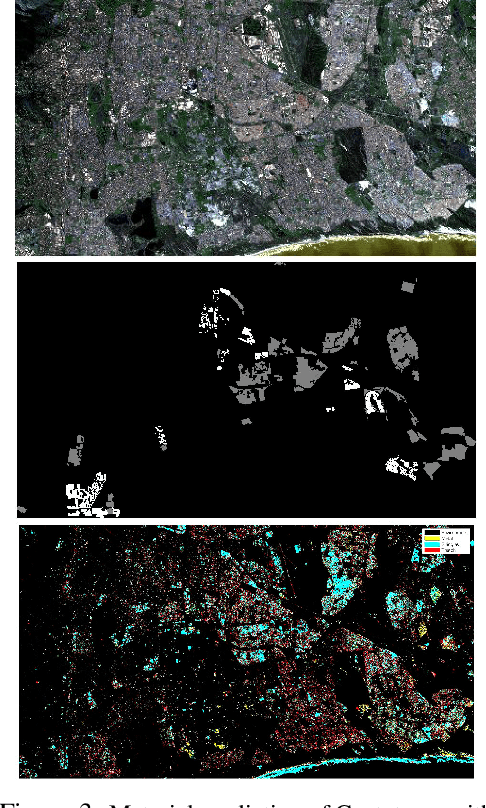
Abstract:Detecting and mapping informal settlements encompasses several of the United Nations sustainable development goals. This is because informal settlements are home to the most socially and economically vulnerable people on the planet. Thus, understanding where these settlements are is of paramount importance to both government and non-government organizations (NGOs), such as the United Nations Children's Fund (UNICEF), who can use this information to deliver effective social and economic aid. We propose a method that detects and maps the locations of informal settlements using only freely available, Sentinel-2 low-resolution satellite spectral data and socio-economic data. This is in contrast to previous studies that only use costly very-high resolution (VHR) satellite and aerial imagery. We show how we can detect informal settlements by combining both domain knowledge and machine learning techniques, to build a classifier that looks for known roofing materials used in informal settlements. Please find additional material at https://frontierdevelopmentlab.github.io/informal-settlements/.
 Add to Chrome
Add to Chrome Add to Firefox
Add to Firefox Add to Edge
Add to Edge